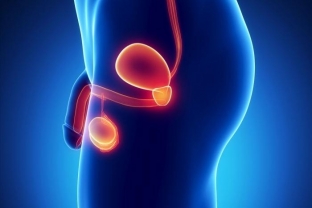It's no secret that one of the pride for every man is his own reproductive organ. At the same time, any pathological condition of the penis becomes a tragedy for a man. Especially in cases where the disease affects the quality of a man's sexual life. That is why erectile dysfunction is a nightmare for males. This pathological condition is quite common today, it can occur in representatives of different age categories, and there are many reasons that cause it. How to correctly diagnose erectile dysfunction - read on estet-portal.com.
Etiology and diagnostic methods of erectile dysfunction
Erectile dysfunction is a persistent impairment of the male body's ability to achieve and maintain an erection of the penis, sufficient for a full sexual intercourse. Erectile dysfunction is a sexual pathology that does not apply to severe health disorders. However, the presence of erectile dysfunction significantly affects the mental status of a man, affects his quality of life and can cause serious problems in his personal life. That is why it is so important to find out the causes of the pathology as early as possible and to conduct an effective treatment of erectile dysfunction.
Erectile dysfunction:
- etiology of erectile dysfunction: main causes;
- importance of clinical examination in erectile dysfunction;
- laboratory and instrumental methods for diagnosing erectile dysfunction.
Erectile dysfunction etiology: main causes
Erection is a physiological state of the male body, which is provided by neurovascular mechanisms regulated by mental and hormonal influences. During an erection, the arteries of the penis expand along with the cells of the cavernous bodies, which ensures blood flow to the penis. At the same time, organ venous occlusion occurs, due to which the outflow of blood does not occur until ejaculation. Any condition in which arterial inflow to the cavernous bodies decreases or venous outflow increases can lead to the development of erectile dysfunction. The following main groups of causes of erectile dysfunction can be distinguished:
- psychogenic factors;
- vasculogenic factors;
- neurogenic factors;
- hormonal factors;
- diseases of the penis itself;
- drug effects.
Importance of clinical examination in erectile dysfunction
Given the huge number of factors that could lead to the development of erectile dysfunction, the diagnosis of this pathology is a rather laborious process. An important role is played by a detailed history taking: it is necessary to find out the individual characteristics of the development of erectile dysfunction, concomitant diseases, possible antecedent factors, etc. The clinical examination also provides very valuable information about the possible nature of the dysfunction. Due to the study of secondary sexual characteristics, one can judge the androgenic saturation of the body. Analysis of the state of the organs of the reproductive system includes determining the size, consistency and localization of the testicles, palpation of the prostate and epididymis, as well as a careful examination and palpation of the penis.

Laboratory and instrumental methods for diagnosing erectile dysfunction
The necessary laboratory and instrumental methods for diagnosing erectile dysfunction are selected individually for each patient. Mandatory for all men with impaired erection is the determination of blood glucose, lipid profile and total testosterone. With a decrease in the concentration of the latter, free testosterone, prolactin and luteinizing hormone are additionally determined. For the differential diagnosis of psychogenic and organic erectile dysfunctions, monitoring of nocturnal tumescences is widely used, which must be carried out for at least two nights. An ultrasound examination of the arteries of the penis and a test with intracavernous administration of vasoactive drugs helps to obtain information about the state of the blood vessels of the penis. Invasive methods for diagnosing erectile dysfunction, such as angiography,






Add a comment